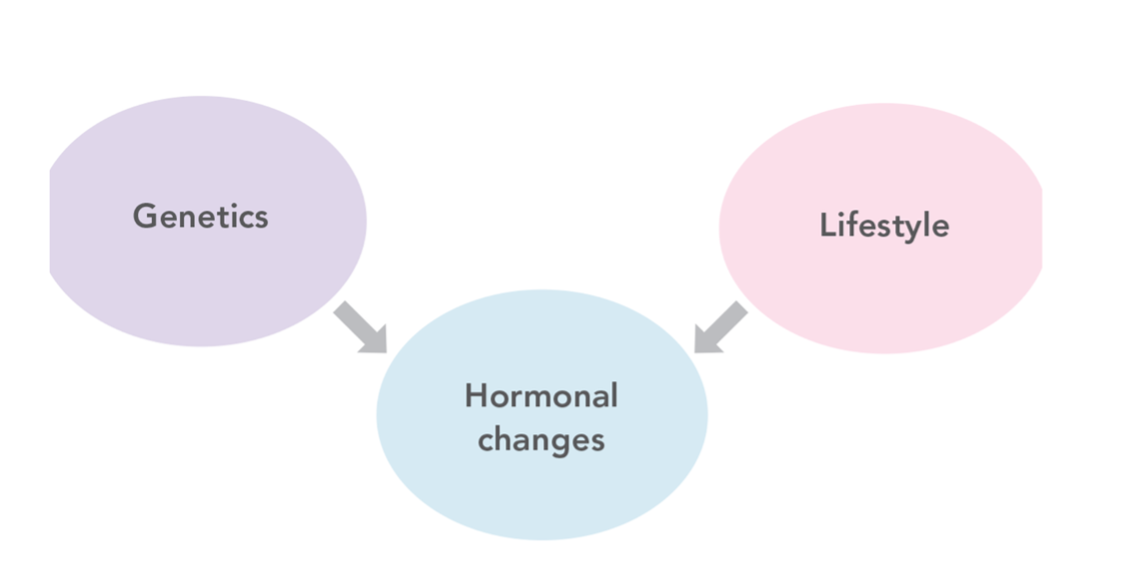03 May Exercises Role in Managing Poly Cystic Ovary Syndrome (PCOS)

Written by Megan Dame (Accredited Exercise Physiologist)
What is Polycystic Ovary Syndrome?
Polycystic ovary syndrome (also known as PCOS) is a hormonal condition that affects 18-13% of women or people with uterus of reproductive age (Jean Hailes).
To be diagnosed with PCOS two of the following three criteria must be meet:
- Anovulation: Refers to when ovulation is skipped and an egg is not released from the ovary during the menstrual cycle, causing irregular or absent periods.
- Hyperandrogenism: An excess number of androgens (sex hormones) in the body. It can cause acne, increased body hair, and decreased breast size.
- Polycystic ovaries: Diagnosed with an ultrasound a condition involving enlarge ovaries with small cysts on the edges.
Unfortunately, 70-80% of women and people with uterus with PCOS have fertility issues
 (Health Direct)
(Health Direct)
Cause of PCOS
PCOS’s exact cause is unknown, however, there appears to be an influence from the following factors (Jean Hailes):
- Family history: Women and people with uterus with PCOS are 50% more likely to have an immediate relative with PCOS
- Hormonal imbalance: An imbalance of insulin (a hormone that controls blood sugar levels) and androgens (male-type hormones, like testosterone) can cause PCOS symptoms
- Insulin resistance: 85% of Women and people with uterus with PCOS are diagnosed with insulin resistance, which is when the cells in your body don’t respond to the hormone insulin as well and cannot take up blood sugar from the body as well.
- Weight: PCOS can occur in all body types, although women with PCOS are at risk of being overweight or obese as they produce too much insulin or the insulin they produce does not work as it should causing weight gain or greater difficulty losing weight.

Factors that contribute to PCOS (Jean Hailes)
Common Signs Symptoms
Signs and Symptoms of PCOS can vary and present with different severity in women (Jean Hailes). Some symptoms of PCOS include (Jean Hailes):
- No period or irregular periods
- Excess hair growth on the face or body
- Mood changes
- Sleep apnoea (a sleeping disorder with abnormal breathing rate)
Exercises Benefits on Managing PCOS
Exercise can play a pivotal role in improving several signs and symptoms of PCOS (Exercise Right). The following benefits of engaging in exercise with PCOS include (Exercise Right):
- Stabilising mood, improving fertility, and reducing insulin resistance
This is best achieved by engaging in Cardiovascular Exercise such as walking, jogging, or swimming. As cardiovascular exercise can release the feel-good hormones endorphins improving mood, it can help balance hormones which can improve fertility, and increase sensitivity to insulin reducing a women’s resistance to the hormone.
- Improves body composition, increases metabolic rate, and reduces insulin resistance
Strength Exercises like squats and push-ups best achieve this. As strength training can increase muscle mass and reduce fat tissue, by also increasing lean muscle mass it increases your resting metabolic rate and insulin sensitivity.
- Decreasing waist circumference and increasing cardiorespiratory fitness
A high-intensity interval training (HIIT) program of alternating between a short bout of high to low intensity work can achieve this. Research has found interval training can reduce waist circumference more than going for a continuous brisk walk, which can reduce PCOS symptoms like reducing testosterone levels. PCOS women are two times more likely to have a cardiovascular event (like a stroke or heart attack) and engaging in HIIT can reduce your blood pressure reducing your risk of a cardiovascular event.

Exercise Role in Improving Insulin Sensitivity
One of the key factors that contributes to the development of PCOS is thought to be insulin resistance (Jean Hailes). This occurs when the body doesn’t respond to insulin, a hormone responsible for keeping blood sugar (glucose) levels in a normal range (Jean Hailes).
When a woman’s body has high levels of insulin, it can increase the production of male like hormones such as testosterone (Jean Hailes). This can impact ovarian function, including ovulation, which is why managing insulin resistance is important part of treating PCOS (Jean Hailes).
Exercise is a natural therapy that can help reduce insulin resistance and therefore manage PCOS. In fact, the positive effects of exercise on insulin resistance can happen almost immediately when you start exercising and can last for up to 48 hours (Exercise Right). Exercise can stimulate muscles to take up blood glucose and use it as fuel reducing glucose concentration whether or not insulin is present (Exercise Right). Exercise also increases insulin sensitivity, making it easier for muscle cells to use any available insulin to take up glucose during and after activity (Exercise Right).
So where to now?
The most effective form of exercise management for PCOS is one you enjoy and stick to. Seeking assistance from an Accredited Exercise Physiologist is a great way to start and ensure you are exercising appropriately for your condition. An Accredited Exercise Physiologist can develop a tailored exercise program along with providing you with lifestyle education to help you achieve your goals.


Sorry, the comment form is closed at this time.